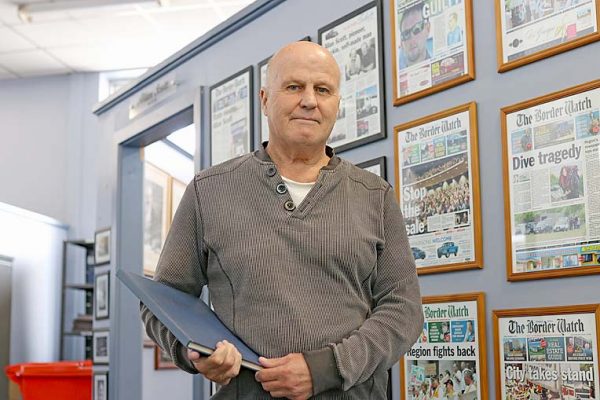

A CAREER in the print industry spanning five decades has seen veteran commercial printer Allen Morris at the coalface of evolutionary production changes.
Entering retirement after 50 years in the sector, Mr Morris said he had met many characters along his journey.
“There are so many highlights I have experienced that I would be here forever,” he said.
“I remember my first day of work on January 6, 1969 like the back of my hand, I went straight to learning the basics.
“I started on the pedal press making business cards and invitations and I can tell you it was a fiddly job.”
Mr Morris spent the first few months of his five-year apprenticeship at Exchange Printings sweeping floors.
“The apprentices were what we called the printer’s devil,” he said.
“They were the roustabout and had to do all the little time-consuming things.”
“I was one of the first Exchange Printers workers to go and get a trade.
“It got to the stage where I started teaching them things because I learnt so much.”
Mr Morris said he was at Exchange Printers for 29 years before he moved onto The Border Watch.
“I was at The Border Watch for 11 years until they closed down the commercial print side of things,” he said.
“I definitely enjoyed my time working as a printer, especially at The Border Watch.”
Mr Morris said the biggest change he saw was the printing techniques used.
“When I first started it was letterpress – hot type, then moved to offset – cold type and now it is digital image printing,” he said.
“Beforehand the printing techniques stayed relatively the same so when the printing changed the job became a lot easier.”
Mr Morris recalled using the Goss-branded printing machine for an hour or so but not often.
“The old Goss used to be four units and was just a nightmare to run,” he said.
“The paper had to travel in between each unit which was web-fed.
“I was only a sheet-fed printer.”
One distinct memory Mr Morris highlighted was melting old type, which required pouring hot metal out into ingots.
“You were pouring hot metal and it used to spit on you and go everywhere,” he said.
“The stuff you used to go through as an apprentice was unbelievable.”
Mr Morris said another large change was the amount of colour available for use on newspapers.
“When I was at The Border Watch it was only spot colour,” he said.
“That meant black and white with maybe a coloured logo here or there.
“Now we have the full coloured pages.”
After leaving The Border Watch, Mr Morris and former TBW employees established Gambier Print where he spent 10 years at the helm.
Mr Morris then “did the full circle” and ultimately returned to Exchange Printers.
“A lot of the people I have met over the years are not with us now so I think I have done pretty well,” he said.
“I see the first guy I saw as I walked through the back door on my first day all the time and am still friends with many I worked with.”







